Background:
In versions of Mac OS up to version 9, the standard representation for text files used an ASCII CR (carriage return) character, value decimal 13, to mark the end of a line.
Mac OS 10, unlike earlier releases, is UNIX-like, and uses the ASCII LF (line feed) character, value decimal 10, to mark the end of a line.
The question is, what are the values of the character constants '\n' and '\r' in C and C++ compilers for Mac OS releases prior to OS X?
There are (at least) two possible approaches that could have been taken:
- Treat
'\n'as the ASCII LF character, and convert it to and from CR on output to and input from text streams (similar to the conversion between LF and CR-LF on Windows systems); or - Treat
'\n'as the ASCII CR character, which requires no conversion on input or output.
There would be some potential problems with the second approach. One is that code that assumes '\n' is LF could fail. (Such code is inherently non-portable anyway.) The other is that there still needs to be a distinct value for '\r', and on an ASCII-based system CR is the only sensible value. And the C standard doesn't permit '\n' == '\r' (thanks to mafso for finding the citation, 5.2.2 paragraph 3), so some other value would have to be used for '\r'.
What is the output of this C program when compiled and executed under Mac OS N, for N less than 10?
#include <stdio.h>
int main(void) {
printf("'\\n' = %d\n", '\n');
printf("'\\r' = %d\n", '\r');
if ('\n' == '\r') {
printf("Hmm, this could be a problem\n");
}
}
The question applies to both C and C++. I presume the answer would be the same for both.
The answer could also vary from one C compiler to another -- but I would hope that compiler implementers would have maintained consistency with each other.
To be clear, I am not asking what representation old releases of Mac OS used to represent end-of-line in text files. My question is specifically and only about the values of the constants '\n' and '\r' in C or C++ source code. I'm aware that printing '\n' (whatever its value is) to a text stream causes it to be converted to the system's end-of-line representation (in this case, ASCII CR); that behavior is required by the C standard.
